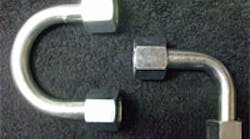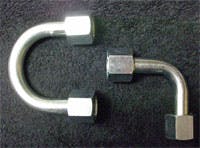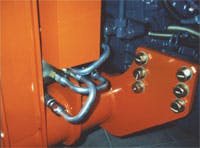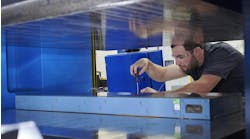Okay. You’ve designed your hydraulic system, you’ve figured out the best routing paths for connecting the fluid lines, but there’s a problem: a component port or fitting you have to connect to is facing the wrong way. Murphy’s law wins again.
In order to make a clean connection, you’ll have to specify a hose or tubing assembly to make a wide 90° or 180° turn. The distance is too far to use a couple 45° or 90° elbows, so you’ll have to specify a section of hose or tube to span the distance. And if the radius is too tight for hose, you’ll have to go with tubing.
A more convenient and less costly solution was recently introduced by Air-Way Mfg. Co., Olivet, Mich. Air- Way’s new Direct Connect product line provides a wide 90° or 180° connection. Some of the advantages of Direct Connect include:
- improved hose assembly routing
- increased hose life
- easier replacement of hose assemblies when necessary
- reduced stress on 45° and 90° hose end assemblies
- utilizes straight hose ends for easy assembly while reducing costs
- lower pressure drop through the assembly tan with alternative solutions.
For details on Direct Connect products, call (800) 253-1036, e-mail [email protected], or visit www.air-way.com.



